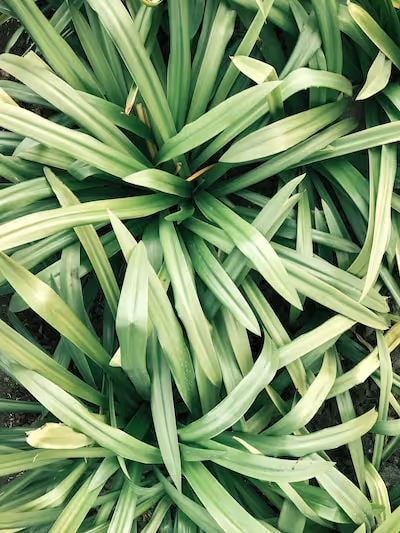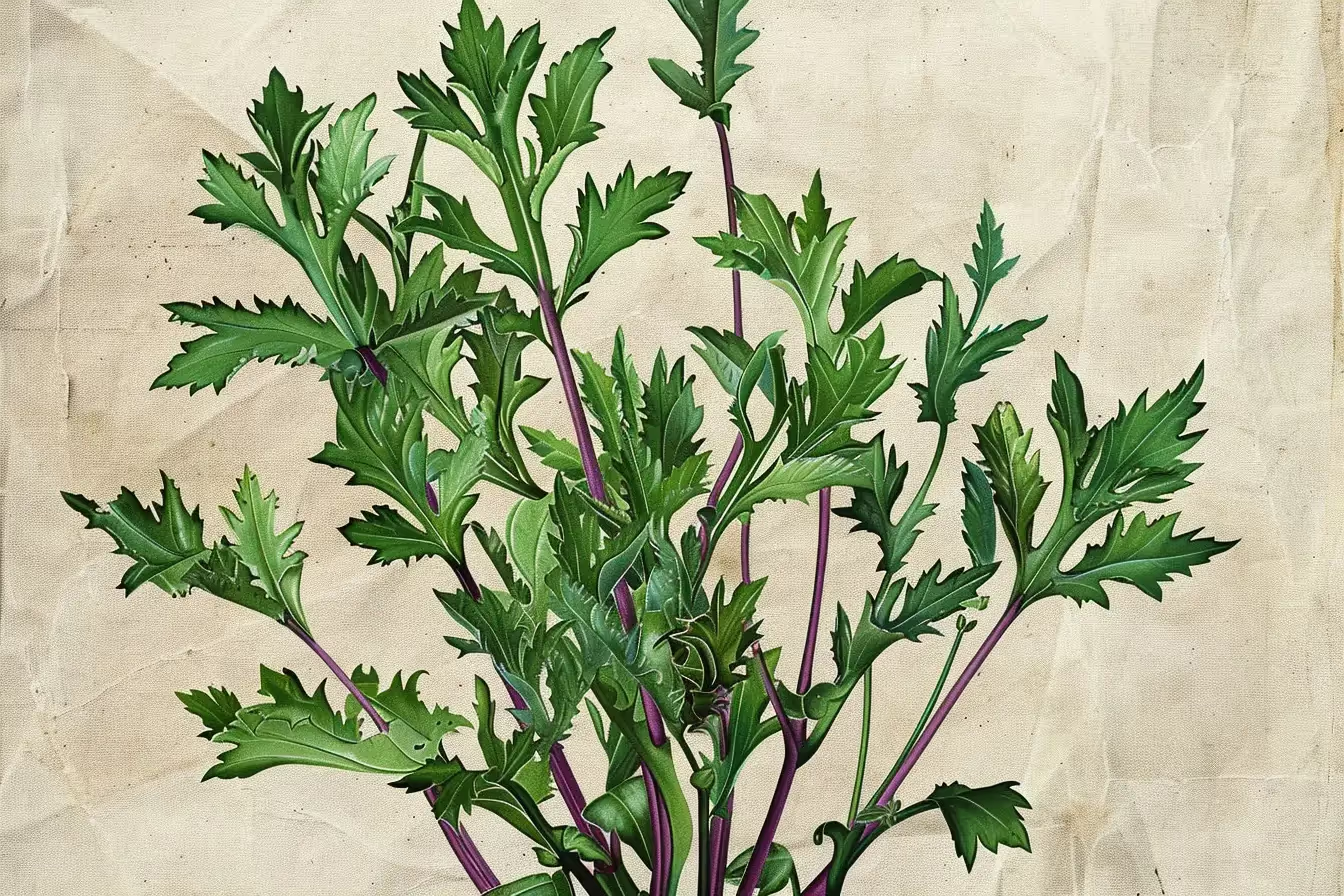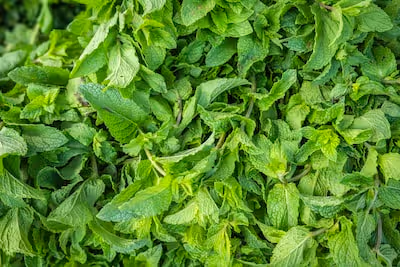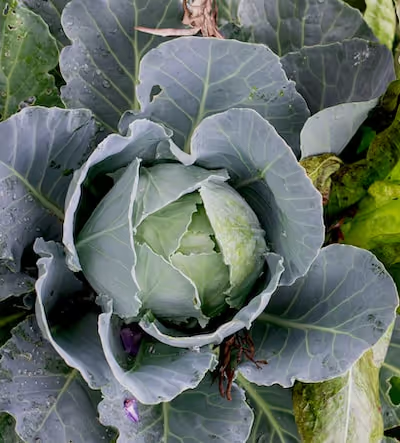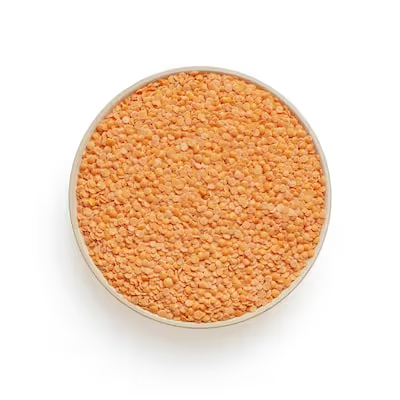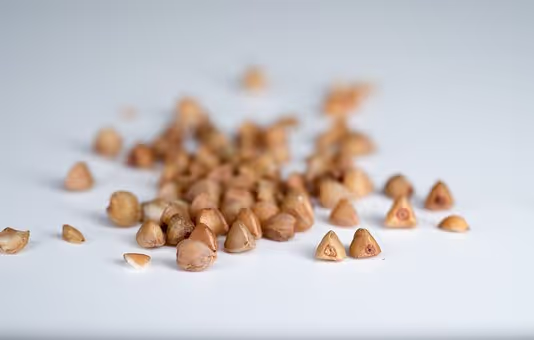Growing Fenugreek: 7 Steps for Healthy Plants and Harvests

Growing Fenugreek
Growing fenugreek puts tasty greens and aromatic spices within easy reach. Quick to sprout from seeds, this hardy herb thrives best in cooler climates and well-draining soil. Get ready: these seven simple tips make growing fenugreek at home an easy pleasure—and you'll soon have fragrant rewards to savor in the kitchen.
Cheatsheet: Fenugreek in Seven Simple Steps
🧰 Tools and Products You'll Need
- Fenugreek seeds (organic preferred)
- Seed-starting mix or compost
- Watering can or spray bottle
- Hand trowel
- Shallow containers or garden bed
- Mulch (optional)
- Scissors or shears (for harvest)
🌱 Step 1: Soak and Sow
Soak seeds 6–8 hours. Sow 1/4 in (0.6 cm) deep in rows, spacing 4 in (10 cm) apart. Soil temp: 55–90°F (13–32°C).
☀️ Step 2: Choose a Sunny Spot
Place in full sun (6+ hours daily). Partial shade tolerated in hot climates.
💧 Step 3: Water with Precision
Keep soil moist, not soggy. Water lightly every 1–2 days until sprouting (3–5 days), then reduce to 2x/week.
🌾 Step 4: Feed and Mulch
Use compost or balanced organic fertilizer once after sprouting. Mulch to retain moisture.
🌬️ Step 5: Thin for Airflow
Thin to 2–4 in (5–10 cm) apart when seedlings reach 2 in (5 cm) tall to prevent mildew.
✂️ Step 6: Harvest Greens or Seeds
Harvest leaves at 3–4 weeks (before flowering). For seeds, allow pods to mature (about 3 months).
🥗 Step 7: Enjoy and Replant
Snip leaves for salads or curries. Re-sow every 4 weeks for year-round supply. Fenugreek: 25% of daily iron in 1/2 cup greens.
-
Growing Fenugreek: 7 Steps for Healthy Plants and Harvests
Step 1: Decide your goal, then pick seed
I grow Growing Fenugreek for two crops: tender leaves in 20 to 40 days and seed in 90 to 110 days. Decide first, because spacing and timing change the whole plan.
For leafy harvests look for fast bunched types labeled methi. For seed any Trigonella foenum graecum works, and I’ve had excellent germination from plain spice-aisle methi too.
Step 2: Time it with the weather
Fenugreek likes cool to mild conditions, about 50 to 80 F or 10 to 27 C. Heat above 85 F or 29 C pushes it to bolt, while hard frost knocks it back.
I sow outdoors 2 to 3 weeks after the last frost, then stagger plantings every 10 days for greens. For seed, I aim for a single spring or early fall sowing.
Step 3: Prep a loose, living bed or a right-size pot
Give it well drained loam with pH 6.0 to 7.5 and full sun, at least 6 to 8 hours. I rake in 1 inch or 2.5 cm of finished compost and skip high-nitrogen fertilizers, since fenugreek is a legume.
Containers work beautifully. Use a 2 to 3 gallon or 7.5 to 11 L pot for seed production, or a 6 inch or 15 cm bowl for cut-and-come-again greens with a peat-free, gritty mix.
Step 4: Sow thick for greens, roomy for seed
Greens: broadcast like you would radish microgreens, about 60 to 80 seeds per square foot or 650 to 860 per square meter, barely cover 0.25 inch or 6 mm, then firm. I trim baby leaves at 2 to 3 inches or 5 to 7.5 cm.
Seed: plant 0.5 inch or 1.2 cm deep, 4 to 6 inches or 10 to 15 cm apart, rows 12 inches or 30 cm. Germination hits in 3 to 7 days at 68 to 77 F or 20 to 25 C.
Step 5: Water, feed, and keep it pushing new growth
Keep the top inch or 2.5 cm moist for the first week, then water to supply about 1 inch or 25 mm per week. Bottom water trays to dodge damping off if you are growing indoors.
Because fenugreek fixes nitrogen with root nodules, I only side-dress with a light compost sprinkle at week three. Pinch the first flower buds on leafy plantings to extend harvest.
“Most vegetables need about 1 inch of water per week, from rainfall or irrigation.”
Source: University of Minnesota Extension, Watering Vegetables
Step 6: Stay ahead of pests and disease
Aphids, flea beetles, and leaf miners nibble here. I use strong water sprays, floating row cover, and sticky cards, and I thin dense patches for airflow.
In soggy spells, damping off and powdery mildew show up. Water early, avoid overhead splashing, and prune a few inner stems on dense stands to keep foliage dry.
Step 7: Harvest like a chef, cure like a spice trader
Greens: cut baby leaves at 3 to 5 inches or 7.5 to 12.5 cm, or snip whole bunches at 4 to 6 weeks. Leave crowns to regrow once or twice.
Seed: let pods turn tan and rattle, then cut whole plants and finish dry on screens or in paper bags. Winnow, then store seeds at 8 to 10 percent moisture in airtight jars away from light.
“Fenugreek’s maple-like aroma comes from sotolon.”
Source: Harold McGee, On Food and Cooking
My field notes and pro tips
- Indoor trays: 10 by 20 inch or 25 by 50 cm flats give two lush cuts in under a month under bright south windows or 16 hours under LEDs.
- Companions: follow heavy feeders like brassicas to help soil biology rebound. I also tuck fenugreek between carrots and beets to shade soil and deter weeds.
- Flavor: water stress in the last week before seed harvest sharpens aroma. Keep plants healthy first, then ease irrigation at the finish.
- Seed saving: fenugreek self pollinates readily. Isolate 10 feet or 3 m and label by sowing date for clean selections.
- Green manure: sow thick after early potatoes, then chop and drop at first bloom. It breaks down quickly and leaves soil springy.
Growing Fenugreek: Troubleshooting at a glance
- Leggy seedlings: more light, cooler nights at 60 to 65 F or 15 to 18 C, and closer sowing for greens.
- Yellow leaves: waterlogging or alkaline soil. Loosen soil, add compost, and check pH.
- Bitter greens: older leaves or heat stress. Harvest younger and give afternoon shade cloth in hot spells.
- No pods: planted too late or excessive nitrogen. Shift to spring or early fall, and ease off fertilizers.
Best seed picks and buying guide
For leafy methi I favor fast, uniform strains labeled “Kasuri” for fragrant leaves. For dual-purpose use, any standard fenugreek does the job.
- Organic garden seed packets work for tidy, predictable stands. Great for container growers.
- Bulk grocery methi seed is budget friendly for greens. I test germination on a damp towel for 48 hours before sowing big trays.
- Look for untreated seed if you plan to sprout or microgreen. Read labels and avoid pretreated seed meant for field sowing.
Flavor, nutrition, and kitchen handling
Leaves bring a savory-bitter snap that lifts potatoes, lentils, and flatbreads. I chill-rinse, spin dry, and wrap in a towel for three days of peak flavor.
Seeds need dry to wake up their perfume in the pan. Lightly toast until aromatic, then grind fresh for sambhar, berbere, or a sharp chutney.
Comparisons and quick alternatives you can grow
- For fast leafy punch in heat: amaranth greens outpace fenugreek in midsummer but lack the maple-bitter edge.
- For gentle bitterness: chervil brings anise instead of maple and thrives in cool shade.
- For texture in mixes: baby mustard fills the same window, with more nose and less sweetness.
My weekly fenugreek routine
- Sow a tray indoors each Sunday for greens, and a row outside every 10 days in spring.
- Water mornings, then again lightly in wind. Keep foliage dry by night.
- Harvest greens on Thursdays for weekend cooking, then feed the bed with a thin compost dusting.
Numbers worth remembering
- Germination window: 3 to 7 days at 68 to 77 F or 20 to 25 C.
- Leaf harvest: 20 to 40 days. Seed harvest: 90 to 110 days.
- Water: about 1 inch or 25 mm per week, more in sandy soils.
- Spacing for seed: 4 to 6 inches or 10 to 15 cm apart, rows 12 inches or 30 cm.
Sourcing, gear, and storage odds and ends
- Mesh screens, paper bags, and a small fan help finish-dry pods without mold.
- A fine-mesh sieve and a shallow bowl make winnowing simple indoors.
- For long storage, add a food-safe desiccant packet to jars and keep under 70 F or 21 C.
Citations and further reading
- University of Minnesota Extension, Watering Vegetables, guidance on weekly irrigation needs.
- Harold McGee, On Food and Cooking, explanation of sotolon and fenugreek aroma chemistry.
- Royal Horticultural Society, Herb growing basics, sun and soil recommendations for annual herbs.
Fenugreek Growing FAQs
What's the ideal soil for growing fenugreek?
Fenugreek dances best in a well-draining, fertile soil that holds moisture without becoming muddy. Blend in compost or aged manure to enrich the earth and encourage sturdy, aromatic growth.
How much sunlight does fenugreek require daily?
Fenugreek thirsts for the warmth and vigor of sunlight—give it at least 6 to 8 hours of direct sun daily to produce lush leaves and bold seeds bursting with flavor.
Should fenugreek seeds be soaked before planting?
Absolutely. Soaking seeds overnight in water awakens their dormant vitality, stimulating quicker germination and ensuring your fenugreek takes root swiftly.
How often do I water fenugreek plants?
Fenugreek prefers consistent moisture—water regularly, keeping the soil slightly damp but not saturated. Allow the top layer of earth to nearly dry before watering again to avoid root rot.
What's the optimal spacing for fenugreek planting?
Sow fenugreek seeds 2 inches apart and maintain approximately 6 inches between rows. This allows your plants breathing space, supporting healthier foliage and bountiful seed pods.
Can I grow fenugreek indoors?
Indeed, fenugreek thrives indoors if pampered with sufficient sunlight. Position plants near south-facing windows or provide supplemental grow-lighting. Ensure adequate airflow to sidestep mildew and promote vibrant growth.
When should I harvest fenugreek leaves and seeds?
Harvest young, tender leaves around 3 to 4 weeks after planting, clipping selectively to promote continuing growth. For seeds, wait until pods turn brown and crispy—usually around 3 to 5 months. Dry them fully before storage to retain their potent aroma.
Growing fenugreek is all about patience, timing, and respecting the process. Good soil, steady moisture, and a little love from the sun are all these seeds ask for. Don’t skip the regular thinning—crowded plants never thrive. Stay sharp for pests, pull weeds early, and you’ll be rewarded with tender greens or aromatic seeds. Fenugreek won’t ask you to break your back, but it’ll reward a watchful eye and simple care. Savor the flavor; homegrown always outshines store-bought. If you’re hooked on unique edibles, you might also like growing cilantro or borage for that wild, fresh-from-the-soil satisfaction. Keep it honest, keep it simple, and fenugreek pays you back every time.
Pro Tips for Maximizing Fenugreek Yield and Quality
Seed Soaking Technique
Soak fenugreek seeds in warm water (68-77°F / 20-25°C) for 12 hours before sowing. This triggers germination and increases sprout rates by up to 20%.
Interplant for Soil Enrichment
Interplant fenugreek with nitrogen-demanding crops like tomatoes or peppers. Fenugreek's root nodules fix atmospheric nitrogen, enriching soil fertility naturally and reducing fertilizer use.
Optimal Mulching Strategy
Apply a 2-inch (5 cm) layer of organic mulch, such as straw or shredded leaves, after seedlings establish (3-4 inches / 8-10 cm height). Mulching conserves moisture, suppresses weeds, and moderates soil temperature.
Beneficial Companion Planting
- Carrots: Fenugreek repels aphids harmful to carrots.
- Beans and peas: Enhances mutual nitrogen fixation.
- Potatoes: Fenugreek deters potato beetles and improves tuber growth.
Timely Pinching for Bushier Plants
Pinch off growing tips once fenugreek reaches 6 inches (15 cm), encouraging side branching, denser foliage, and increased leaf harvest by an average of 15-20%.
Harvest Leaves Early for Nutrient Density
Early leaf harvesting (within 30 days of sprouting) yields highest concentrations of iron, vitamin C, and dietary fiber. Regular harvesting promotes continuous foliage growth.
Seed Pod Collection for Self-Sufficiency
Allow plants to mature fully (approx. 110-120 days) until pods turn yellow-brown. Dry pods indoors, then thresh gently to separate seeds for future planting, culinary use, or microgreen sprouting.
Find out which plants will thrive in your garden!
Answer a few fun questions and get custom plant recommendations perfect for your space. Let’s grow something amazing together!

start your season
